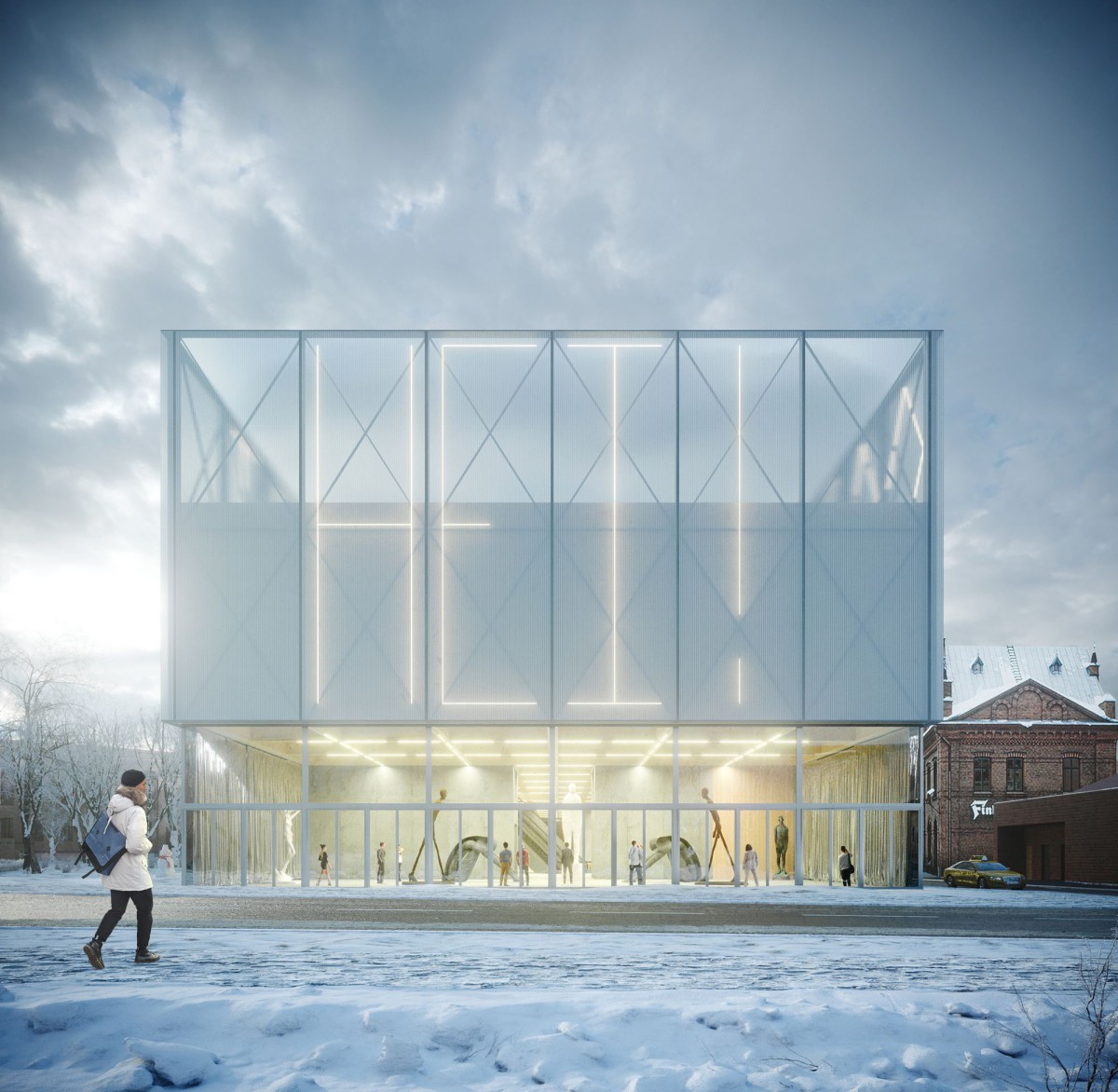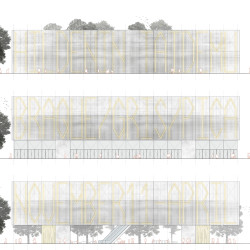PRÁCTICA . renders: © ZIR Visual
Traditionally, the role of a museum could be summarized in three different activity categories: research, preservation and display. Research includes the institution’s involvement in collecting, curating and interpreting artifacts of artistic, cultural or scientific relevance. Preservation comprises all the activities aimed to their maintenance and elongation of their lifespans. Lastly, display involves those actions related to the dissemination of knowledge and education of the public. However, technological advances in the field of communications have rendered the latter category potentially dated. What is the value of visiting a museum if all its content is available instantly from everybody’s homes? How do we project a new Sara Hildén Art Museum that will stay relevant for future generations?
Visiting a museum doesn’t just offer the opportunity of seeing an object of certain relevance, but also the experience of social interaction revolving around the basis of culture itself. The social aspect of a museum transforms it into a platform for discussion and exchange of diverse points of view and cultural interpretations. It stands not as an institution for culture consumption, but as the place for culture construction in which all people can discuss about their diverse pasts, address the issues of their present and project a future based on common values and shared significance. The new role of the museum can be therefore summarized in three different categories: research, preservation and critical dialogue.
The Sara Hildén Art Museum consequentially stands, not as a traditional succession of fixed exhibition rooms, but as an open, inclusive and versatile platform for social interaction and civic discussion. The Sara Hildén permanent collection and its temporary exhibitions become the center for cultural dialogue in Tampere, and its new building emerges as a piece of public space in which critical thinking is the protagonist.
_
Location: Tampere, Finland
Area: 5.730,35 m2
Client: Sara Hildén Foundation, City of Tampere
Authors: PRÁCTICA (Jaime Daroca, José Mayoral, José Ramón Sierra)
Collaborators: Amanda Castellano
Engineering: BAC ECG
Renderings: ZIR Visual
Tradicionalmente, la función de un museo podría resumirse en tres categorías de actividades diferentes: investigación, conservación y exposición. La investigación incluye la recopilación, conservación e interpretación de artefactos de relevancia artística, cultural o científica. La conservación comprende todas las actividades destinadas a su mantenimiento y a la prolongación de su vida útil. Por último, la exposición implica las acciones relacionadas con la difusión del conocimiento y la educación del público. Sin embargo, los avances tecnológicos en el campo de la comunicación han hecho que esta última categoría quede potencialmente desfasada. ¿Qué valor tiene visitar un museo si todo su contenido está disponible al instante desde los hogares de todos? ¿Cómo podemos proyectar un nuevo Museo de Arte Sara Hildén que siga siendo relevante para las generaciones futuras? Visitar un museo no sólo ofrece la oportunidad de ver un objeto de cierta relevancia, sino también la experiencia de interacción social en torno a la cultura. El aspecto social de un museo lo transforma en una plataforma de debate e intercambio de diversos puntos de vista e interpretaciones culturales. No se trata de una institución para el consumo de cultura, sino de un lugar para la construcción de cultura en el que todas las personas pueden debatir sobre sus diversos pasados, abordar las cuestiones de su presente y proyectar un futuro basado en valores comunes. El nuevo papel del museo puede resumirse, por tanto, en tres categorías diferentes: investigación, conservación y diálogo crítico. En consecuencia, el Museo de Arte Sara Hildén se erige, no como una sucesión tradicional de salas de exposición fijas, sino como una plataforma abierta, inclusiva y versátil para la interacción social y el debate cívico. La colección permanente de Sara Hildén y sus exposiciones temporales se convierten en el centro del diálogo cultural en Tampere, y su nuevo edificio surge como una pieza de espacio público en la que el pensamiento crítico es el protagonista.









